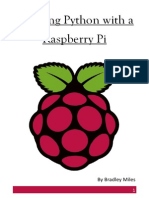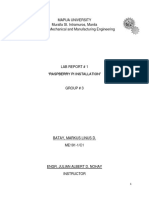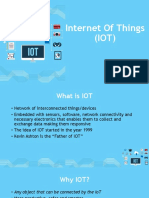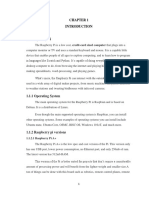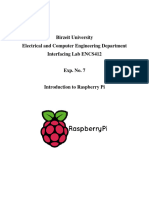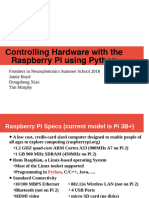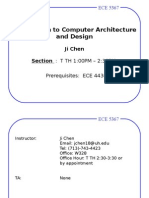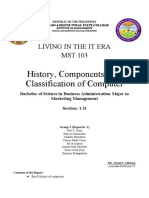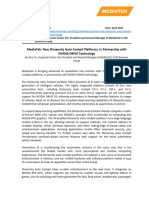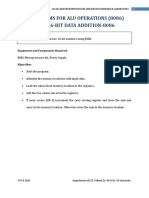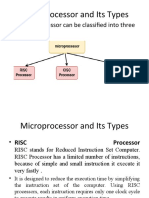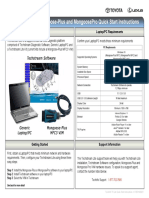0% found this document useful (0 votes)
61 views2 pagesPython Programing For IR4.0 - Obj & Outcome
This Python programming course teaches the skills needed for IoT devices and industrial automation. It covers Python basics, data structures, file input/output, and using Python with Raspberry Pi. Students will learn to install Python, write programs using variables, functions, and loops. They will also set up the Raspberry Pi, connect sensors and actuators to GPIO pins, and generate PWM signals. The course aims to provide hands-on experience developing IoT devices using Python and Raspberry Pi.
Uploaded by
abhay63Copyright
© © All Rights Reserved
We take content rights seriously. If you suspect this is your content, claim it here.
Available Formats
Download as DOCX, PDF, TXT or read online on Scribd
0% found this document useful (0 votes)
61 views2 pagesPython Programing For IR4.0 - Obj & Outcome
This Python programming course teaches the skills needed for IoT devices and industrial automation. It covers Python basics, data structures, file input/output, and using Python with Raspberry Pi. Students will learn to install Python, write programs using variables, functions, and loops. They will also set up the Raspberry Pi, connect sensors and actuators to GPIO pins, and generate PWM signals. The course aims to provide hands-on experience developing IoT devices using Python and Raspberry Pi.
Uploaded by
abhay63Copyright
© © All Rights Reserved
We take content rights seriously. If you suspect this is your content, claim it here.
Available Formats
Download as DOCX, PDF, TXT or read online on Scribd
/ 2


















